Is A Holiday In Mauritius Expensive? Our Budget Breakdown 2025
Check out if a trip to paradise is affordable, or is a holiday in Mauritius just too expensive?
Mauritius, the island known as a honeymoon destination and gorgeous resorts along tropical beaches. Yes, Mauritius is a luxury destination. At least, that was what we thought until we saw pictures of this gorgeous island and just couldn’t stop imagining ourselves walking barefoot on pristine beaches, sipping something fruity under a palm tree and couldn’t think of a better destination to go to.
So half excited and half nervous we first checked the places to stay in Mauritius before jumping to the airline websites.
And guess what: while Mauritius can be pricey, it’s 100% possible to keep your costs in check. In the low season, you can snag cozy accommodations for $45 a night, rent a car for $30 a day, enjoy meals for $10, and book tours for around $50. Just keep in mind – prices do rise during peak season.
We travelled for 2 weeks to Mauritius and based on our own travels, I’ll give you the actual costs plus a deep dive into how things like high season, street food, and transportation costs can make or break your budget.

Type of Holiday = Type of Budget

Let’s get real. Before you even think about booking, ask yourself: What kind of Mauritius holiday are you dreaming of?
There are two main routes:
Option A – Luxury resort life: infinity pool, breakfast buffets, maybe even a butler handing you cold towels like it’s no big deal.
Option B – More local, more real: guesthouses, street food, and the occasional ride on a Mauritian bus (not exactly recommended unless you’re into thrill rides and have loads of time).
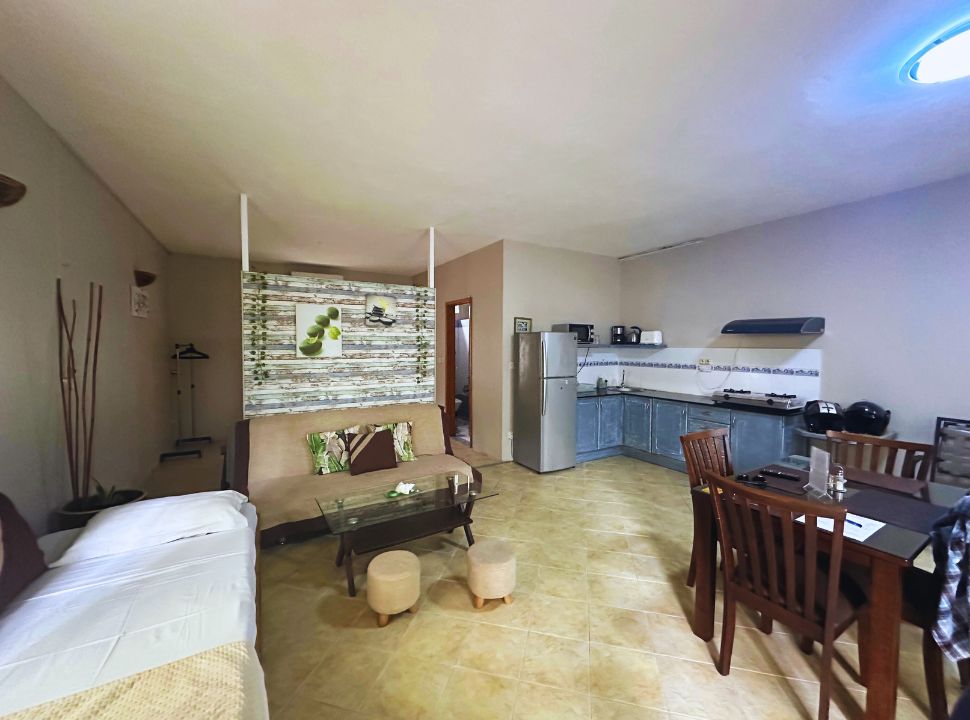
We went with Option B—let’s call it mid-range style. No beach resorts or morning mimosa bars. Instead, we stayed in locally-run guesthouses, some tucked behind family homes, others more hotel-like.
All had kitchens, which saved us on breakfasts and gave us a cozy spot to cook when it we just didn’t feel like heading out in the rain (as it does in paradise).
Now, resorts do have their perks. If you’re after that “wake up, hit buffet, stroll to the sea” vibe—go for it. You can find wonderful places in all price-ranges. Just plan to drop at least USD 200/day.
But we’re the type who’d rather spend less on a bed and more on exploring. Give us a scooter and a some beach hopping over champagne service any day.
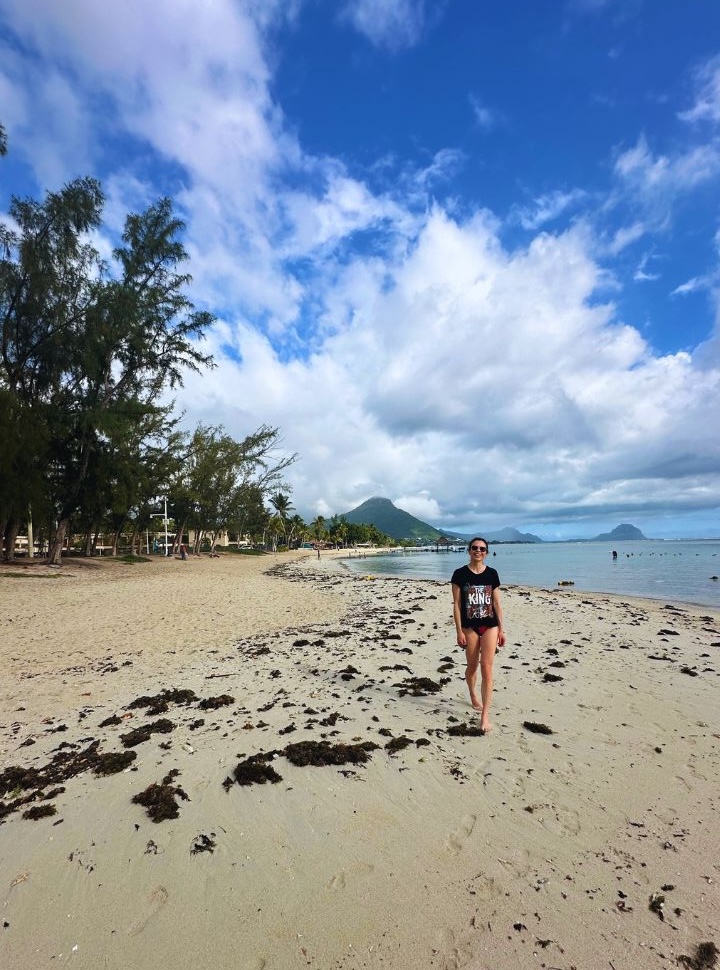
So that said, this is what we actually spent, two adults, 1 child, and two weeks of lots of fun:
- Flights (end of April from Düsseldorf with Turkish Airlines):
🎟️ USD3164 / €2789,29 round trip (for the three of us), USD 1054 / €929 p.p. - Transportation (2x 125cc scooters):
🛵 MUR 19700 / USD 432 including drop-off and pick-up at specific locations, excluding fuel
It could have been much cheaper, if we had rented the cheapest 125cc. Instead we chose the huge Kymco (USD 17,50 a day) and one smaller Sym (US12 a day). The Sym was absolutely fine, but Matt and our son just wanted to the upgrade experience. - Taxi to the airport:
🚖 MUR 2000 / USD 44 (1 hour trip) - 14 nights of accommodation:
🛏️ USD760 / USD 700, average USD58 / USD 50 a day (ranged from guesthouses to private studios with kitchen) - Lunch + Dinners out:
🍽️ USD480 (food trucks at the beaches was the cheapest option, but due to limiting choice in vegetarian options we ate a lot in restaurants) - Groceries for breakfasts & rainy day dinners:
🛒 USD 115 - Tours + Entrance Tickets (Chamarel park, dolphin tours, catamaran trip to Flat island):
🏝️ USD315,64 for the three of us, USD115 p.p.
PIN TO SAVE IT FOR LATER

Just like anywhere else in the world, prices in Mauritius shift with the seasons. High season runs from November to April, and the low season from May to September. Luckily the low season in Mauritius not only provides affordable prices but it it offers cooler temperatures around 25 degrees celcius. So these months are definitely the best months to visit this tropical island.
Total cost of our holiday in Mauritius
Total spend for 3 people, 14 days: €4550,65 excl. travel insurance and additional costs such as souvenirs, local sim card and petrol.
That’s €1516,88 per person, or about USD 108 per day per person. It isn’t the cheapest vacation we have had, but we could compare it with a European summer holiday – peak season.
From our own experience, there were a few things we could’ve done differently to trim the budget a bit. But honestly? The biggest game-changers come down to three key things:
🕒 Timing
📍 Location
🌴 And how deep you’re willing to dive into local culture instead of sticking to the touristy bubbles.
If you’re open to skipping the fancy hotel brunch and grabbing a fresh samosa from a local food stall instead—your wallet will thank you.
Stick around—we’re breaking it all down.
Flights Costs To Mauritius – The High Ticket Item

Since Mauritius is an island located in the Indian Ocean and about 2000KM (1250miles) of the coast of Africa, then there is no way around it – you are hopping on a plane to get there.
Flights are one of your biggest expense—unless, of course, you’re lucky enough to live in South Africa (around USD 300 round trip) or India (USD 450 round trip).
For the rest of us, it’s all about getting crafty with your booking game.
We used Google Flights to sniff out the cheapest days for the end of the month April, then cross-checked those dates on Skyscanner like true travel detectives. Living in the Netherlands, we quickly found out: no direct flights to Mauritius. The options we got? Wildly overpriced. We’re talking Air France via Paris or Emirates via Dubai.
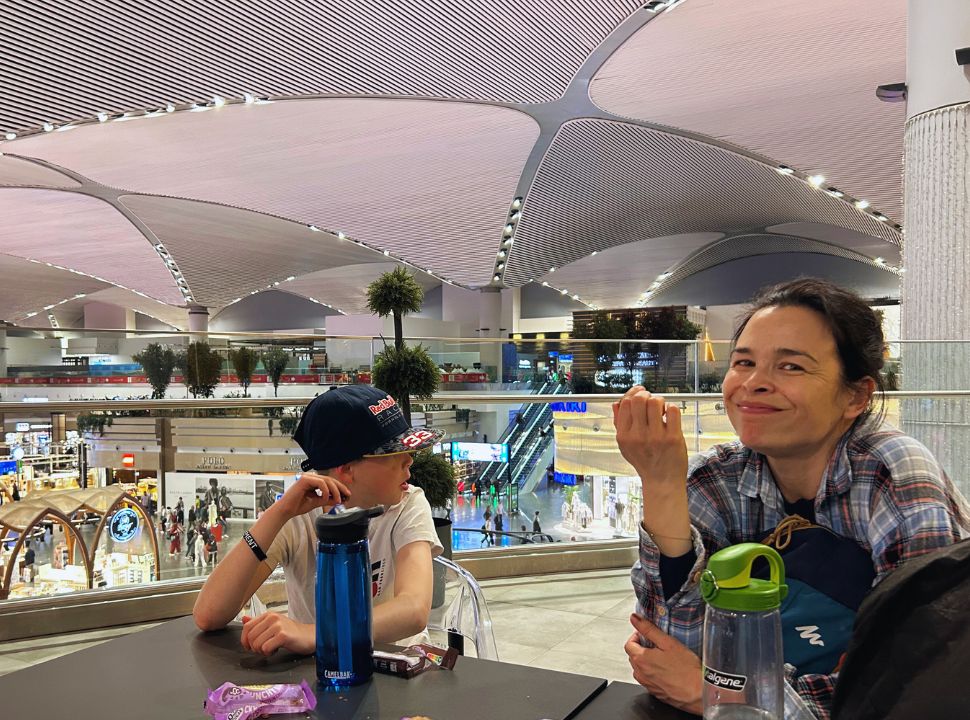
But then we found a return flight for USD 700 with Air Mauritius out of Gatwick (lucky if you are living in the UK!), and another reasonable deal via Düsseldorf with Turkish Airlines. Jackpot. Off to Dusseldorf we went.✈️
Interestingly, we also spotted a USD 1,100 return flight from New York to Mauritius via Paris in May or June. Considering the distance, that’s crazy cheap. The catch? Flight time ranged from 21 to 31 hours, with some serious transit hustle. But hey—when paradise calls, you answer, right?
But generally speaking, you can expect to pay around USD 1000 for a flight to Mauritius if you’re leaving from Europe. These are usually direct or include just one quick stop.
Sure, if you dig around on Skyscanner, you might stumble across flights for USD 680 out of Paris during the shoulder seasons—think April, May, or October, when the tourist crowds thin out. Sounds like a dream, right? Until you realize you’ll be flying via Jeddah… or somewhere even farther off course, making your total travel time 30+ hours.
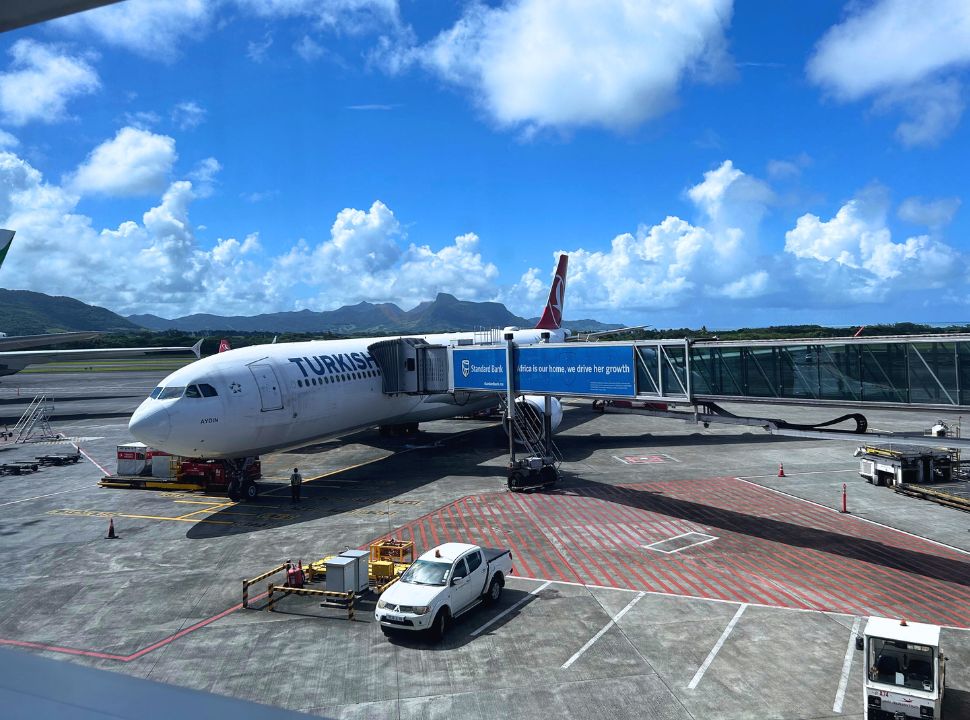
As for us, we wanted to fly out earlier, but prices were sky-high until after Easter. So, we waited—passed on the chocolate eggs, survived family brunch, and then boom—saved €300 p.p per ticket. Timing really is everything.
The moral of the story? If you’ve got flexibility, use it. Play around with different departure cities or tweak your travel dates. And if you spot a great deal—don’t hesitate. We saw a €700 flight out of Gatwick, blinked, and poof—it was gone. Now, as I’m writing this, I can’t find anything close to that price again.
So, keep your eyes peeled, dare to wait it out, and you just might land a deal. Otherwise, be ready to spend around USD 900 to 1200 for that ticket to paradise.
Accommodation Costs in Mauritius: From Budget To 5-star
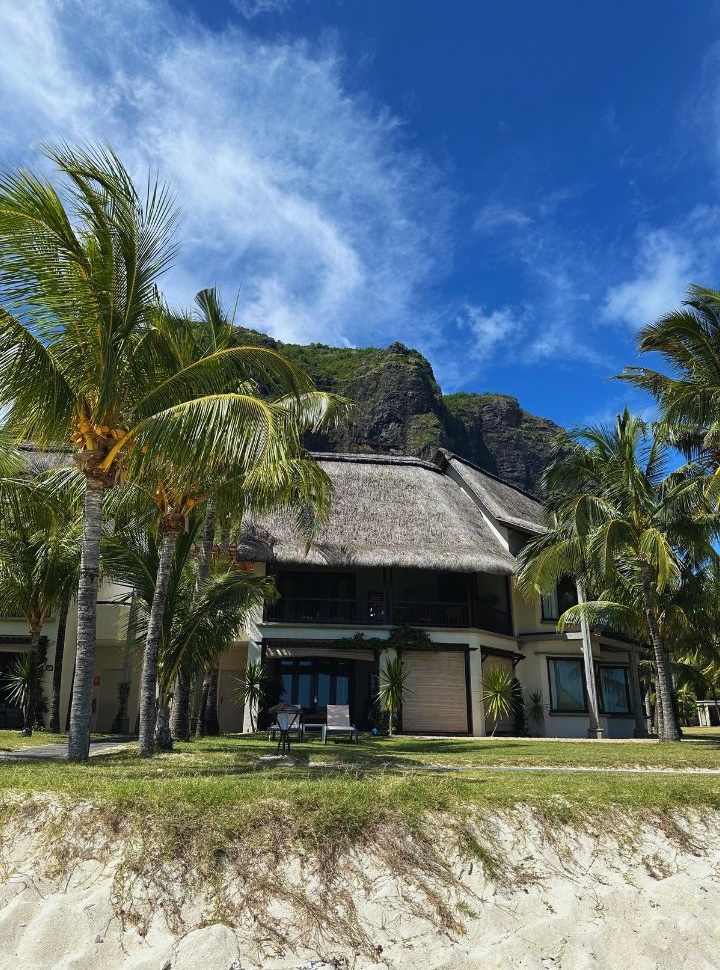
Let’s start off with a quick general overview of the costs for accommodation in Mauritius.
| Type | Average Price per Night (USD) |
| Private rooms | $30 – $50 |
| Boutique hotels | $60 – $120 |
| Beach resorts | $150 – $500+ |
Overview of Accommodation Prices
As you can tell, you can make your Mauritius holiday as expensive as you wish —ranging from jaw-dropping luxury resorts to budget guesthouses.
Prices can swing dramatically depending on the time of year and where on the island you’re staying. But whether you’re traveling in high season or during the quieter shoulder season, there are easy way to keep your costs low without sacrificing too much comfort.
We started our search about three months in advance, using Booking.com and setting the nightly price filter to USD 60 or less. What did that give us? Well… let’s just say we saw a small selection of accommodation with a lot of questionable décor choices. Think mint green curtains from 90’s, bed frames that looked like they’d seen generations, and photos that just weren’t selling it.

But here’s the twist: once we arrived, those little cosmetic quirks didn’t bother us one bit. The mattress were not vintage yet very comfy, everything was clean, and most spots had a kitchen and a verandah—which, honestly, made us feel like we had our own slice of island living. We even cooked a few meals while listening to the rain.
One thing that really surprised us once we arrived in Mauritius? There were way more affordable options than we expected. It actually made us wonder if we should’ve just waited and booked something a couple of weeks before. In the low season, that’s definitely doable—and might even score you a better deal.
Recommended Low Budget Accommodations:
While on the island, we stayed in four different places, and if you’re looking for somewhere to stay in the same towns we visited, here are three we can happily recommend:
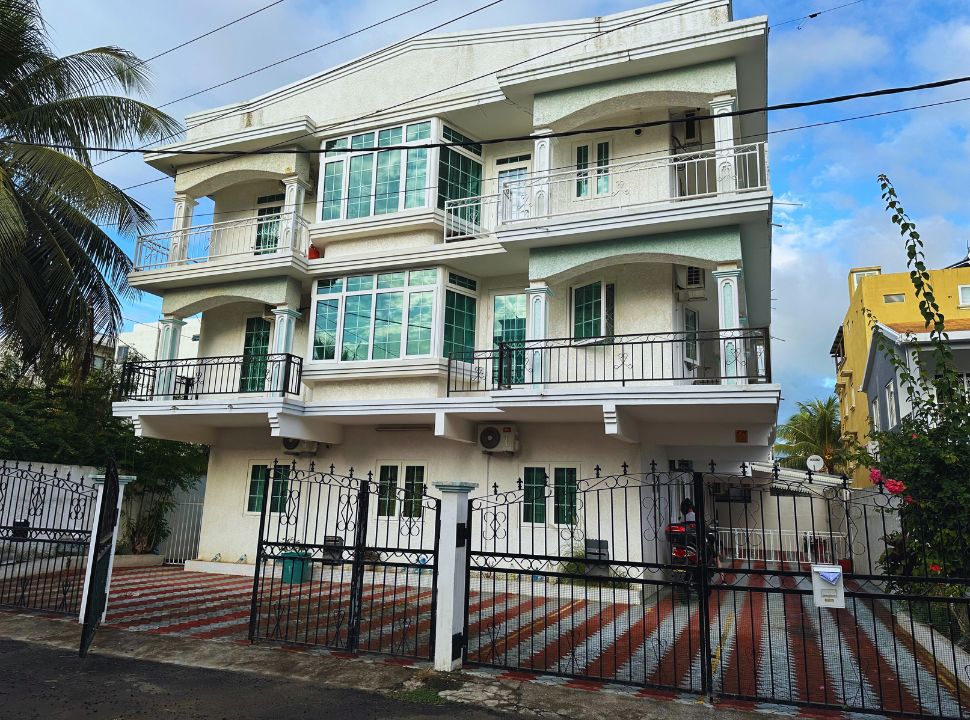
JN Sunflower – Le Morne Brabant
This cozy guesthouse offers ensuite rooms, a shared kitchen, and a gorgeous top-floor verandah where you can soak in the views. We stayed here for six nights and lucked out with the only room that had its own kitchen and private side entrance. Worth asking about! Downside: restaurants and shops are a 20 minute drive away, so wheels needed.
Residence Lasenza Apartment – Flic en Flac
A spacious apartment tucked away on a quiet street, just a short stroll to the beach. We loved the residential vibe, the peace and quiet—and the washing machine was a total win for light packers like us.
Lharmonie Villa – Péreybère
This one was a game-changer. Bright, stylish interiors, a lovely open kitchen and seating area, a big, comfy bathroom, and—our favorite part—a gorgeous garden that gave the whole place a tropical holiday feel.
If you’re traveling in low season and plan to move around, there’s no need to book everything way in advance. We kind of regretted locking in three nights in Trou d’Eau Douce—after arriving, we checked around Mahebourg and found tons of charming stays for $30–$50 a night that hadn’t shown up months earlier.
Public Transportation & Rental Costs
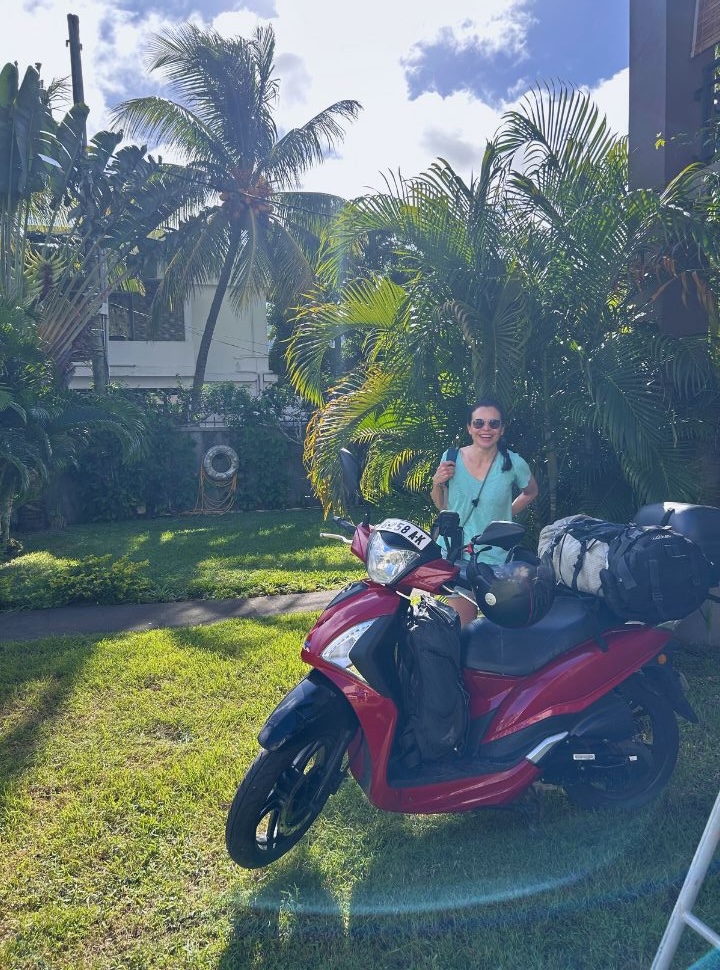
If you really want to explore Mauritius properly, you’re going to need wheels—no question about it. The island’s jaw-dropping sights like hidden waterfalls and Le Morne Brabant aren’t exactly waiting for you on the main road with a welcome sign. They’re tucked away, off the beaten path—and worth every turn.
Our advice? Rent a car or motorscooter. It gives you the freedom to roam, take detours, chase sunsets, and stop for fresh pineapple on the side of the road. Honestly, it just makes the trip feel like a real holiday.
Car Rental
If you’re sticking to the paved roads (which are generally in great condition), there’s no need to go full off-road adventurer. A small but comfy rental car will do just fine.
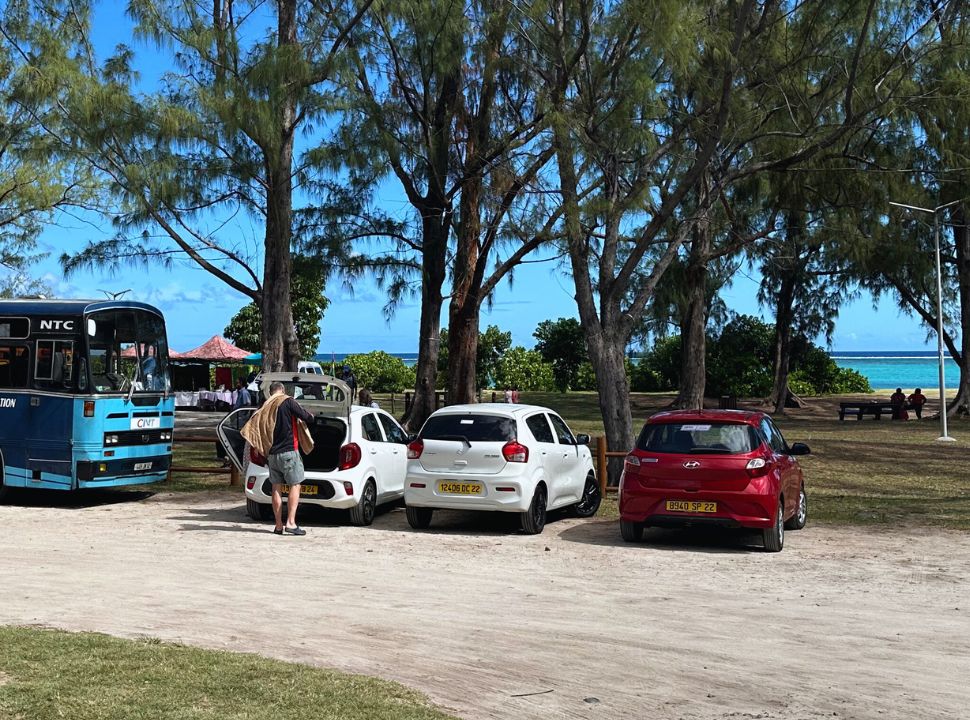
And since we sincerely want to give the best budget tips, we noticed that renting from a local rental company is much cheaper the then big players. At a local rental compnay and you can snag one for just a little over USD 30 a day.
Want to upgrade your ride? Some companies even rent out 4×4 Toyota Hilux trucks for around USD 60 a day. Not bad if you want to feel like you’re on safari—Mauritius style.
If you rent it from renowned sites like Economybookings then they are often 10 or 15 dollars more expensive. That’s a lot of money if you plan to rent for a couple of days. However, the plus side of this website is that you can earn points – ideal for those renting a lot plus these are internationally renowned rental companies, so you know what you are dealing with when something does go wrong.

Motorscooter Rental
As for us? We went the two-wheeled route and rented motorbikes—and honestly, we loved it. Cruising along coastal roads with the ocean on one side and lush green mountains on the other felt so much more immersive than sitting in a car (at least, that was our experience).
If you’re considering it, we’d recommend going for a 125cc scooter—it’s powerful enough to keep up with traffic, which can reach speeds of 60 to 80 km/h.
Just a heads-up: you’ll need a motorcycle license to rent a 125cc. No license? You’ll be limited to 50cc, which is totally fine for buzzing around town, but not ideal for longer or hillier journeys.
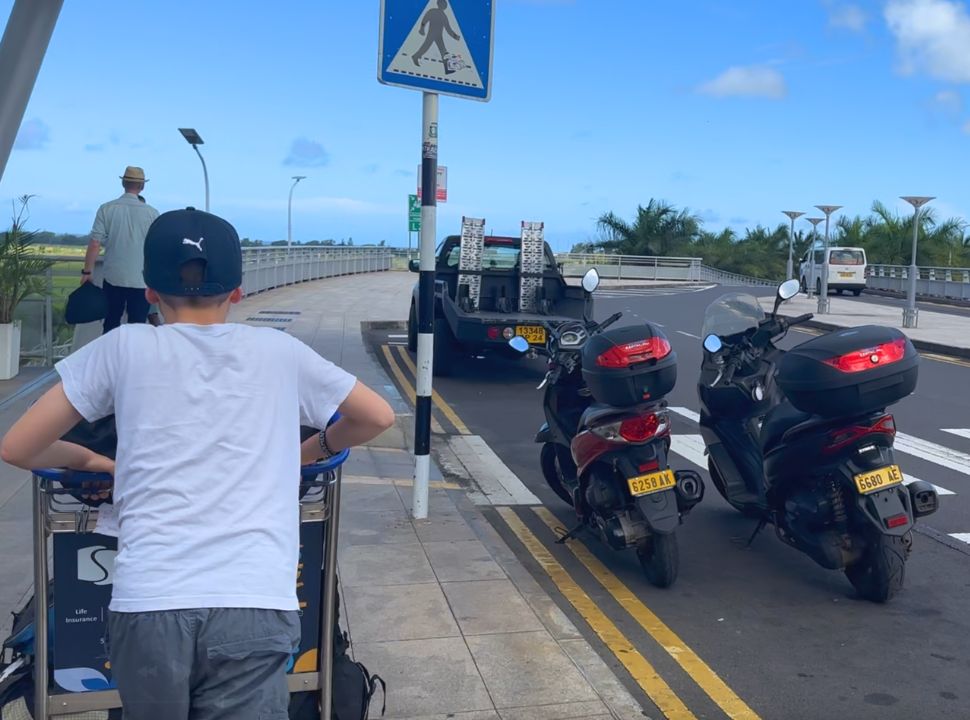
There are plenty of 125cc scooters to choose from. I went for a SYM, your standard workhorse of a scooter—reliable, smooth, and only USD 12 a day. Matt opted for the Kymco 125cc, a beast of a scooter—heavier, larger, and honestly a lot of fun. It’s especially great if you’re tall or riding two-up. That one ran us USD 17 a day.
Another bonus? Most rental companies offer airport pickup and drop-off. Ours did too, charging just USD 18 for a transfer—compared to a USD 40 taxi ride. That’s savings right there.
Taxi
If self-driving’s not your thing, no worries. Taxis are available everywhere, especially in bigger towns where you can flag one down right off the street.
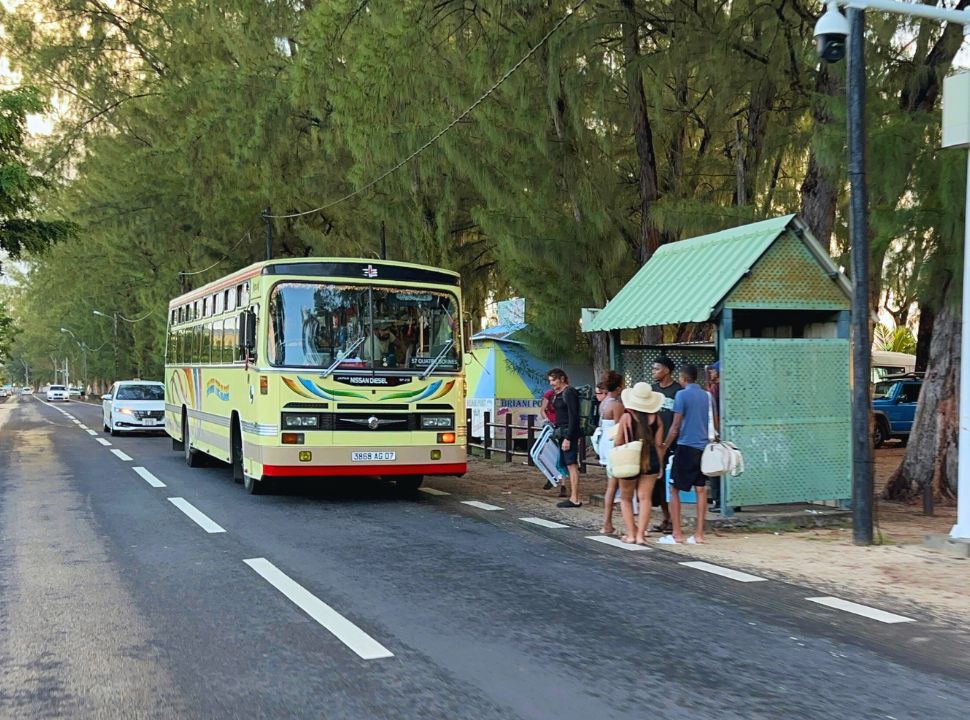
Bus
And of course, there’s always the bus.
Yes, it’s dirt cheap—but cheap comes at a cost: time. A bus ride from Flic en Flac to Port Louis, for example, can take up to two hours one way. Plus, buses mostly stick to the main roads running between major cities, so you’ll likely miss out on those hidden coastal gems and scenic detours that make Mauritius so special.
If you’re planning to beach-hop within one area or don’t mind taking it slow, the bus can work just fine. But if you’re in the mood for adventure? Fuel up and hit the road.
Here’s a quick guide to what things cost:
- 🚌 Public bus ride: USD 0.50 – 1
- 🚗 Rental car: USD 30/day (gas not included)
- 🛵 Motorscooter (125cc): USD 12–17/day (gas not included)
- 🚖 Taxi (short trip): USD 5 – 50 (depending on distance)
- ✈️ Airport taxi or pre-booked transfer (Airport to Grand Baie, ~1hr): USD 40 – 50
Costs of Eating Out in Mauritius

Mauritius is a melting pot of cultures, and that richness definitely shows up on the plate. With influences from Indian, Creole, Chinese, and French cuisine, the island offers an incredible variety of local dishes. If you eat meat and enjoy trying new things, you could easily enjoy a different Mauritian meal every day of a two-week trip.
That said, finding local eateries isn’t always straightforward. While you might expect food trucks or small fast food restaurants on every corner, especially near the coast, they’re not always there when you need them.
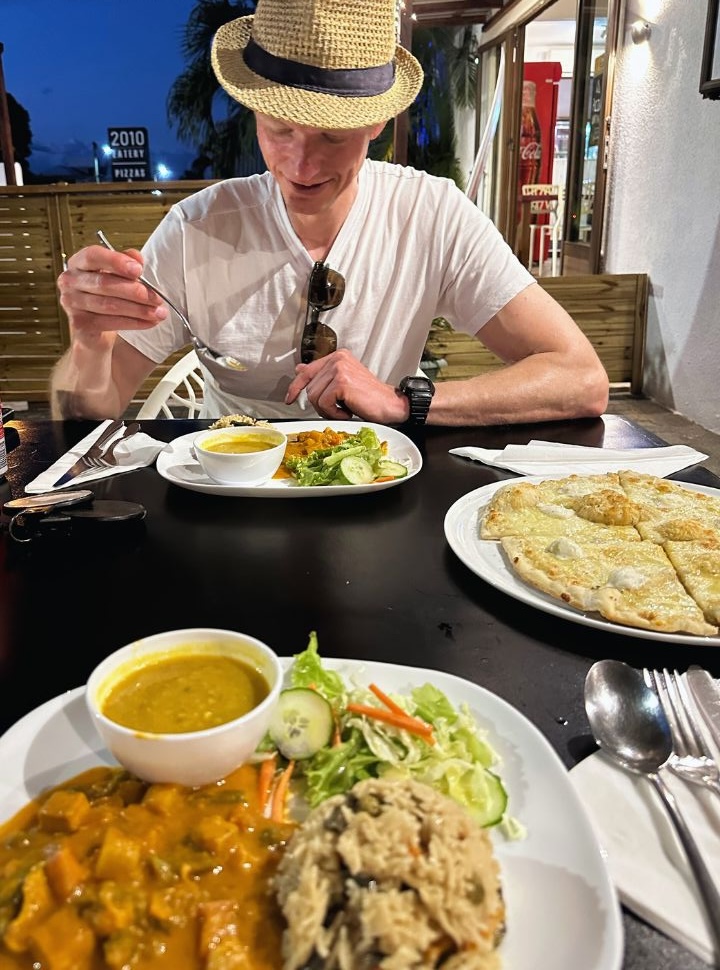
In less touristy areas like Le Morne Brabant, La Gaulette, or Trou d’Eau Douce, we noticed many places were either closed during the day or not open at all on weekdays. In busier towns and larger public areas, you’ll have more choice—but even then, some local spots run mainly on weekend business, when locals are more likely to eat out.
So yes—eating local in Mauritius is both delicious and affordable. But here’s a little heads-up: what’s available can depend a lot on where you are and even what day it is. We (a bit naively) thought we’d be living our best island life, eating out of a food truck for every single meal.
That didn’t quite happen.
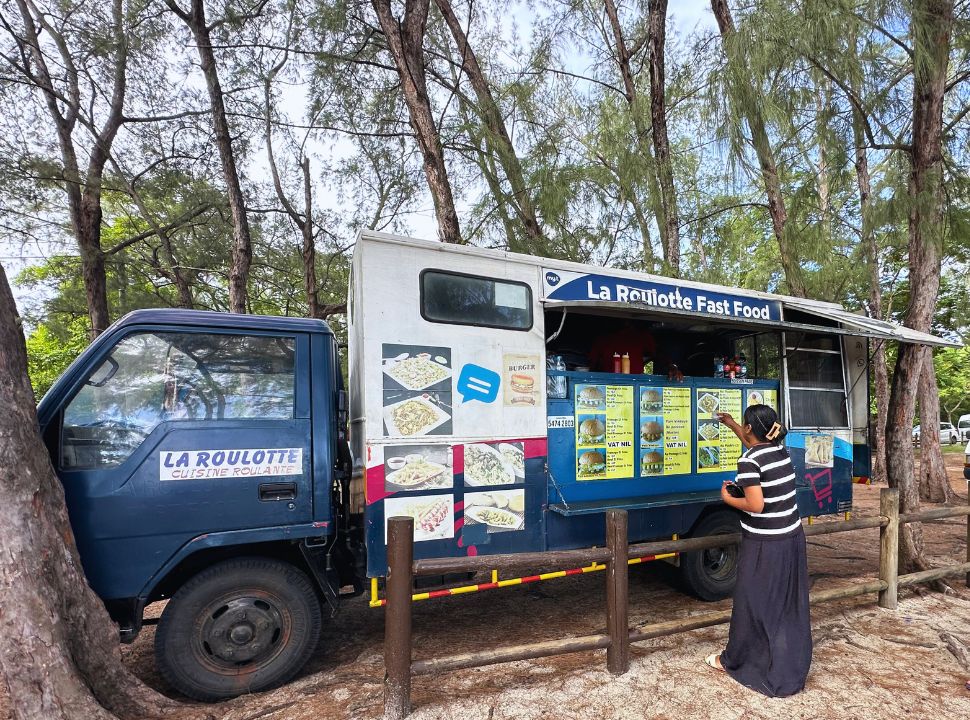
And as vegetarians, we found it even trickier. Sure, there are options—like the ever-reliable samosa (10 pieces for just USD 2.20—bargain!). But there’s only so much fried food one stomach can handle. Tasty? Definitely. Sustainable three times a day? Not so much.
In the end, we ended mixing it up:
- Beachside food trucks for a quick bite
- Low-key local lunch spots for something hearty
- And mid-range restaurants for dinner—especially Indian or Italian, because let’s be honest, pizza and pasta exist on every continent now.
Dinners usually cost us around USD 50 for the three of us—no alcohol, no meat dishes. Just good food and full bellies.
If you’re budgeting for meals in Mauritius, here’s a rough guide:
- 🍛 Local meal (roti, dholl puri, boulettes): USD 2–5
- 🍽️ Mid-range restaurant: USD 10–20 per person
- 🍷 Tourist area restaurant (with fancier menus and ocean views): USD 25–40+ per person

We don’t know about you, but when we’re on holiday, treats become a way of life—a coffee here, an ice cream there, dessert just because. You know the drill. Vacation calories don’t count, right?
But funny enough, even though we were very open to indulging, we were surprised to find that—outside of Port Louis—there weren’t many cafés, pastry shops, or ice cream spots around. It’s like the island was gently nudging us into a detox.
So, without even trying, we sort of… accidentally went on a diet. No croissants for breakfast, no mid-afternoon gelato, no triple-chocolate cake to “celebrate the sunset.” It was heartbreaking. And possibly healthy.
Tours & Activities Costs in Mauritius: What’s Worth Paying For
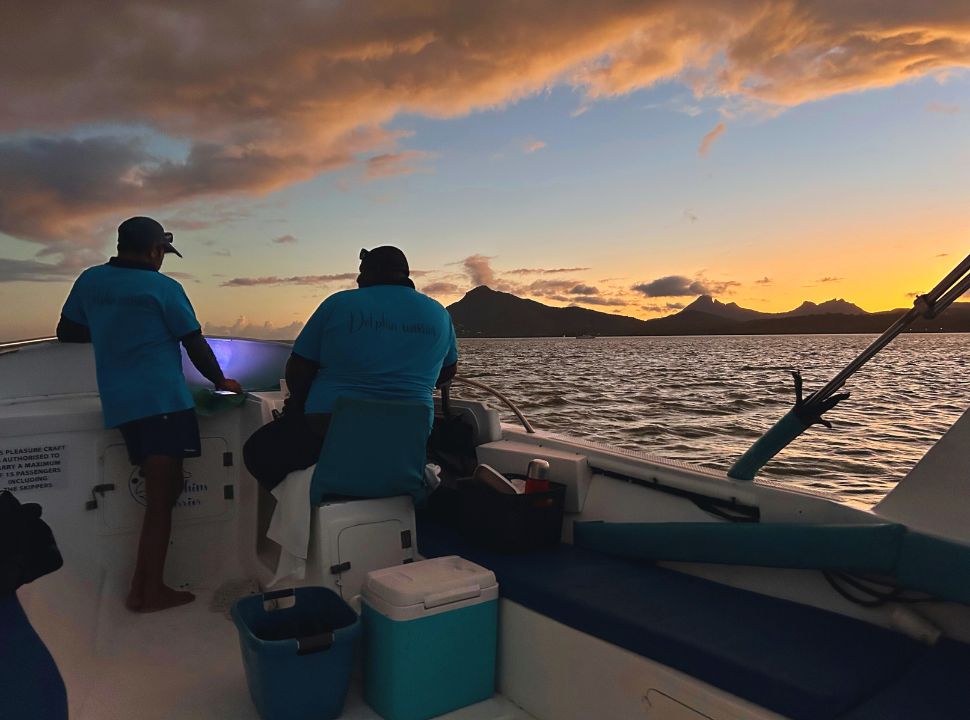
If you’re anything like us—independent and always up for a bit of DIY adventure—you’ll probably try to see as much of Mauritius as possible without a guide. And honestly, a lot of it you can.
Many of the island’s hikes, waterfalls, and beautiful public beaches are completely free to access, with no entrance fees. Even better, most beaches come with clean public toilets and shower facilities—a major win for budget travelers.
Here’s the thing: sometimes, booking a tour is 100% worth it. Sure, you can explore a lot on your own—but there are certain experiences that just run smoother, feel richer, and go deeper when guided by a local. If you’re going to spend a little extra, these are the tours we wholeheartedly recommend:
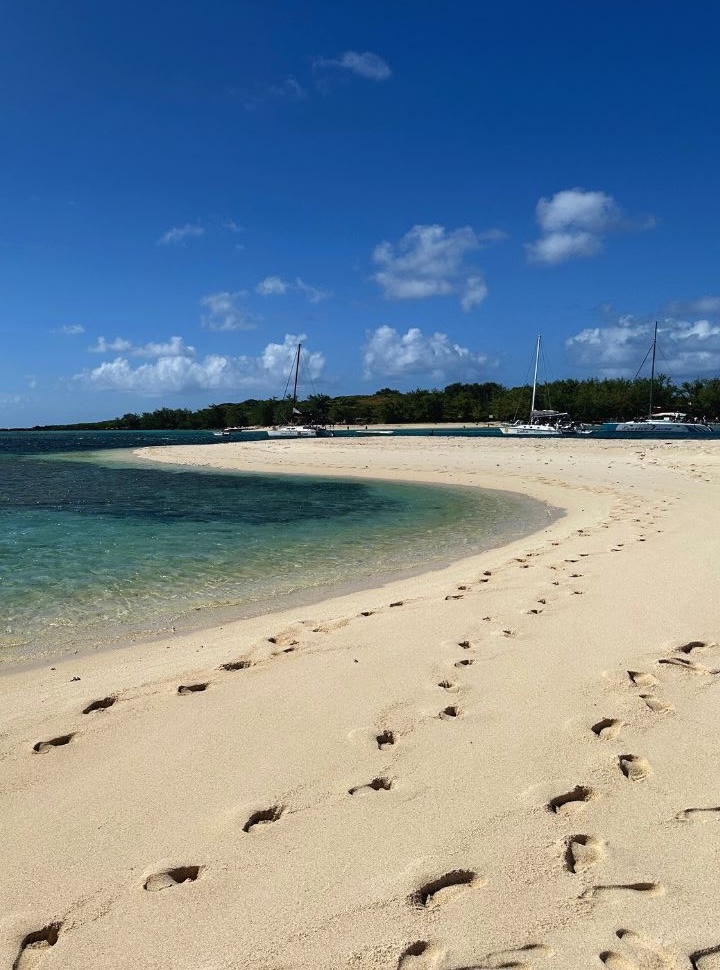
Island Hopping Adventure
Whether you’re cruising to Île aux Cerfs (which we couldn’t do) or setting sail on a Northern Isles tour (which we loved!), these trips are an absolute highlight. Most cost between USD 50–100 and include lunch, snorkeling gear, and—believe it or not—unlimited drinks. Think crystal-clear waters, sandy beaches, and good vibes all day.
We loved our day out with Babacool Pereybere to Flat island. The small catamaran takes small groups only (no loud and party music). A similar option is Passion Oceane.

Cultural & Culinary Tours
If you’re into rum tasting or want to dive into the local food scene, a guided tour is a must—especially in Port Louis. We explored the capital on our own and, honestly? It didn’t quite click. A guide would’ve made all the difference in uncovering hidden gems and hearing the real stories behind the sights. And not to forget all the various food we could have discovered. Expect to pay around USD 50 per person.
If you love history and food, then a Port Louis Street Food & City Tour is best way to experience the capital of Mauritius.
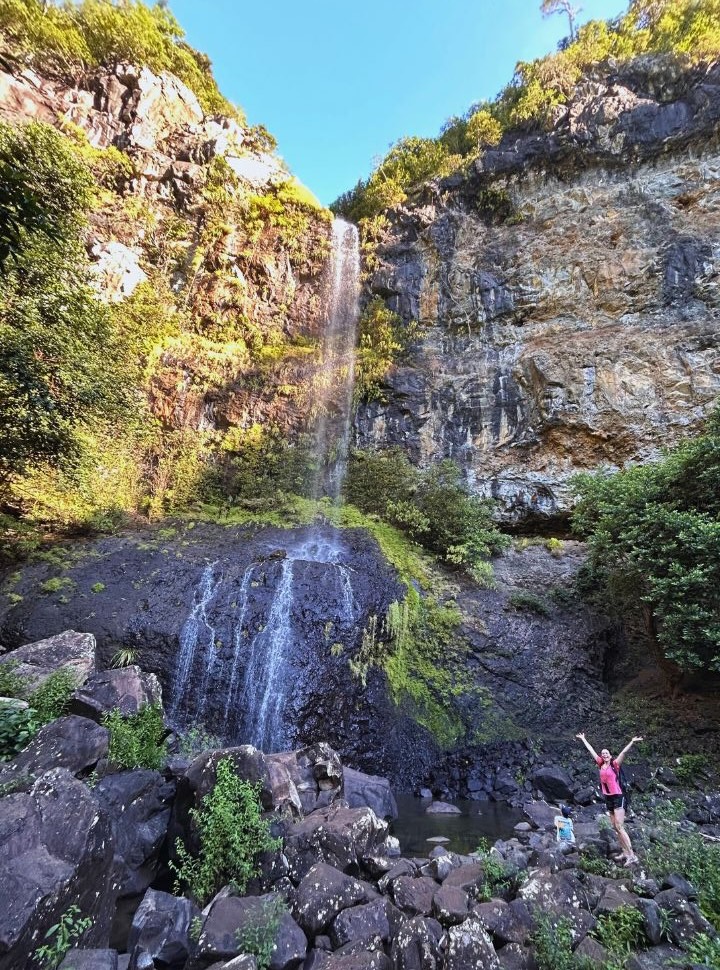
Hiking Tours
Yes, you can hike spots like Tamarin Falls or the legendary Le Morne Brabant solo. But if you’re unsure about the trails or want to skip the stress of steep climbs and dead ends, going with a local guide is a smart move. Many tours even include a home-cooked lunch, which is always a win. Prices start at around USD 70 for a half-day trek.
Highly Recommended Guided Hikes: 3-hour Tamarin Waterfalls Hike &
4-hour Le Morne Mountain Hike
Botanical Garden in Pamplemousses
The Sir Seewoosagur Ramgoolam Botanical Garden is probably one of the most peaceful and picturesque places on the island—and entry is only USD 6. A perfect low-cost, high-reward outing.

Chamarel Waterfall & Seven Coloured Earth
Pay USD 10 for park entry and take in the surreal landscape of naturally colored earth and a distant view of the waterfall. Just note: Ebony Forest isn’t included in this price.
Whale Watching Excursions
For something more epic, try a whale watching trip—especially during peak season. Tours usually cost USD 100–120, depending on the time of year and the operator. There is no guarantee of seeing a whale, so make sure you go during between July and November when chances of seeing them are the highest.

Dolphin Watching Tours
Cruise the open sea and spot wild dolphins—sometimes up close! These tours typically cost around USD 50 and often include a bit of snorkeling as well.
So while not everything in Mauritius needs to be pre-booked or planned, these experiences are well worth the splurge. They’ll give you deeper access, local knowledge, and unforgettable memories you might not stumble upon on your own.
Is it expensive to live in Mauritius?
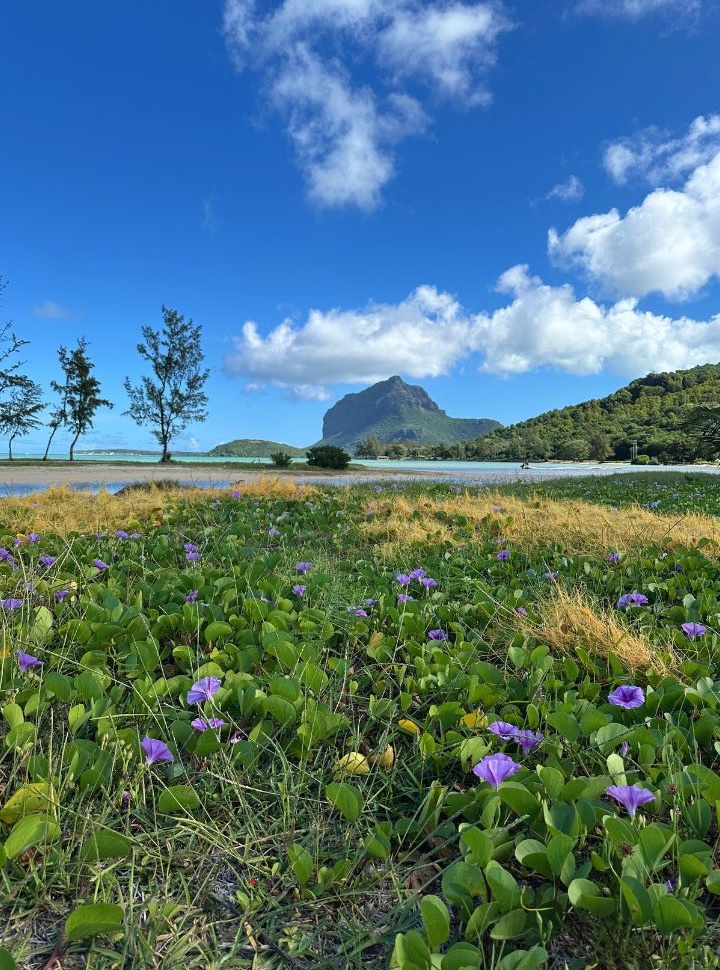
Let’s be honest—once you’ve landed in Mauritius, tasted the local cuisine, and dipped your toes in the crystal-clear waters, you’ll probably ask yourself: Do I really have to leave? The answer? Not necessarily.
Mauritius is a clean, welcoming island with stunning nature and even more beautiful people. Add to that its well-organized infrastructure, and it becomes clear why it’s ideal for remote workers, digital nomads, and even families looking to settle in for the long haul.
We noticed a lot of construction activity, especially near Tamarin—a hotspot for expats. Heading into Flic en Flac, vast open spaces are being transformed with newly paved roads, clearly preparing for large residential complexes. We wouldn’t be surprised if hundreds of apartments hit the rental market soon.
Not sure if we should warn you to visit Mauritius earlier then later with these massive building project ahead…
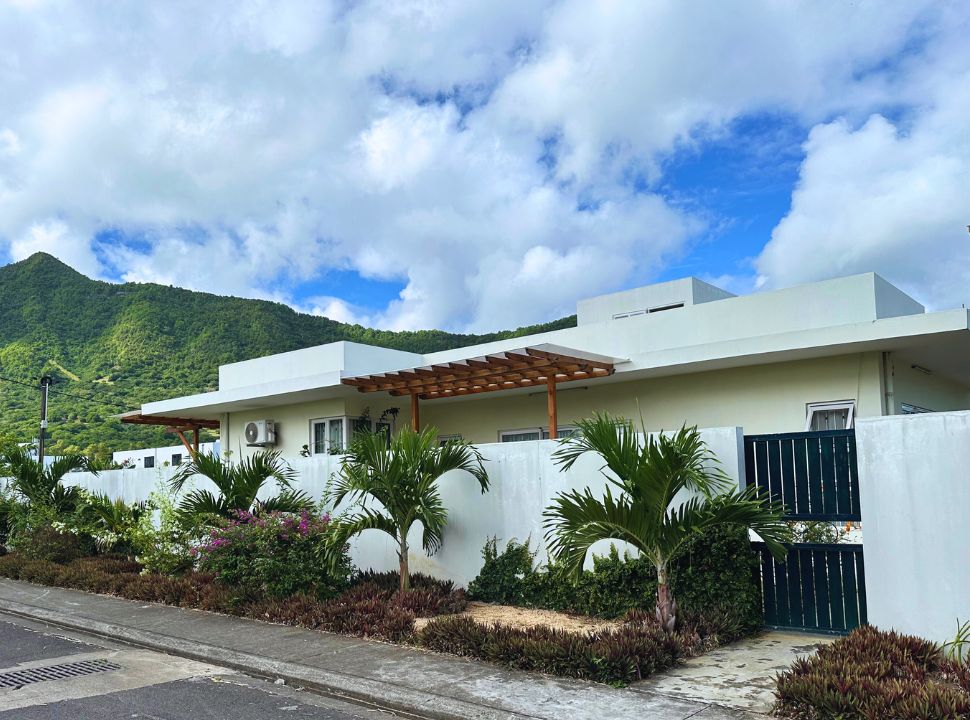
That said, we recommend skipping the short-term vacation rentals like Airbnb and diving into the world of long term rental contracts. Real estate agencies here offer much better value for money, with prices ranging from USD 700 to… well, sky’s the limit depending on how fancy you want to get.
To stretch your budget even further, do your grocery shopping at the larger supermarkets and grab your fresh produce from local markets. We were surprised that a pineapple in the supermarket was more then twice the price then a fruit stall along the beach.
These are the costs you can expect when living in Mauritius:
Accommodation
- Budget Apartment or Guesthouse: USD 400–700/month (depending on location and amenities)
- Coastal towns like Flic en Flac, Pereybere, or Blue Bay tend to cost more than inland spots, but you can still find gems a short walk from the beach.
Groceries & Essentials
- Supermarket shopping for basic groceries (fresh fruit, veggies, rice, eggs, pasta, etc.): USD 150–250/month
- Local markets are even cheaper
Transportation
- Car rental (monthly rate for a small car): USD 400–500
- Scooter rental: USD 150–200
- Gas: Around USD 1.30/liter
- Bus fares: USD 0.50–1 per ride (great for short hops)
Internet & Mobile
- Home Wi-Fi: USD 25–40/month (decent speed for remote work in most areas)
- Mobile Data SIM (10–15GB): USD 10–15/month
Extras
Gym, co-working spaces, or yoga classes: USD 30–80 depending on location
Eating out occasionally, a few activities, and small indulgences (coffee, snacks, etc.): USD 100–200/month
Mauritius Holiday Cost Saving Tips
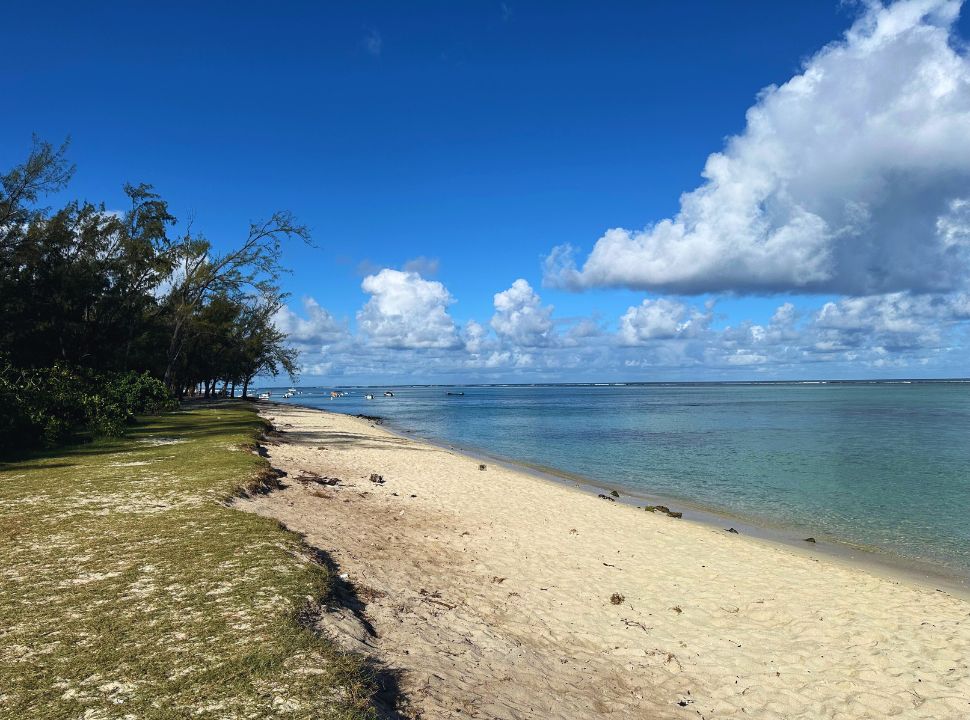
Visit the Public Beaches
You don’t need to splash out on a fancy resort to enjoy Mauritius’ stunning beaches. Every beach—yes, every single one—has a spacious, clean public area. Most come equipped with toilets, showers, and plenty of parking. No wristband or room key required.
Many beaches are nestled next to shady parks, meaning you can stretch out under a tree and skip the overpriced lounger and umbrella. Just imagine the same turquoise view—minus the waiter serving you cocktails. Sounds like a fair trade, right?
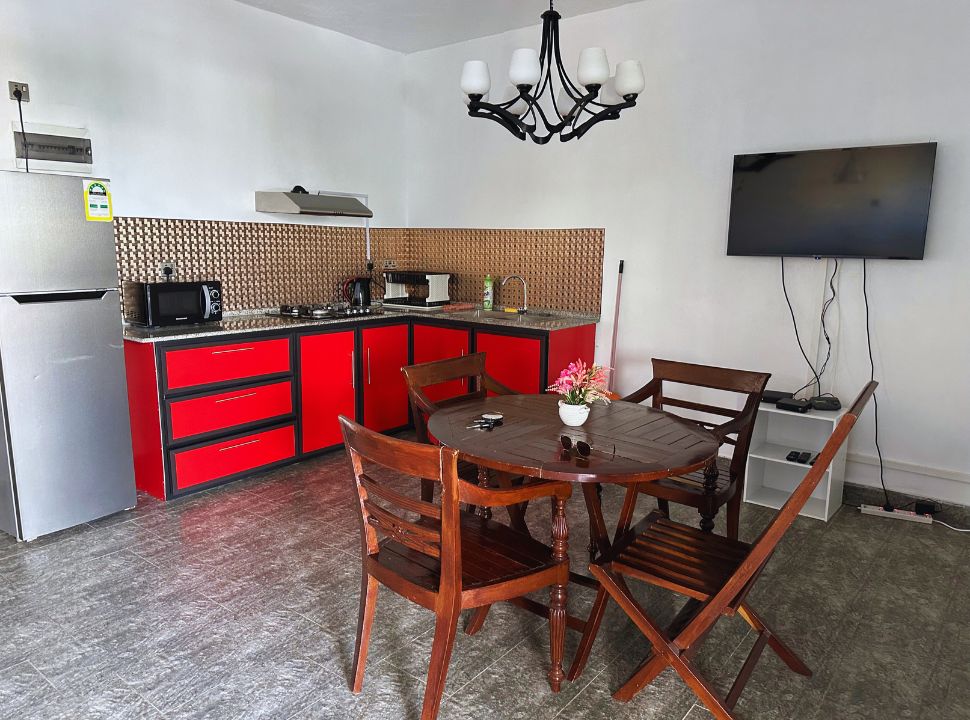
Accommodation with a kitchen
Want to save even more? Book a guesthouse or apartment with a kitchen. I know what you’re thinking: “I’m not cooking on holiday.” We felt the same way. But hear us out—breakfast is no big deal. A few groceries (eggs, cereal, bread, cheese), and you’re enjoying a quiet, private morning in your PJs, coffee in hand, no buffet crowds in sight.
Plus, after a late lunch out, we often kept dinner light—toast with eggs, or leftovers. Not just to save money, but because we genuinely didn’t feel like dressing up and heading out again.
Staying in budget-friendly accommodation can seriously cut your costs. Sure, they might not be Instagram-glam, but they’re comfy, clean, and spacious—often more so than a standard resort room. And best of all? You’re free to explore multiple beautiful beaches, not just the one outside your hotel.
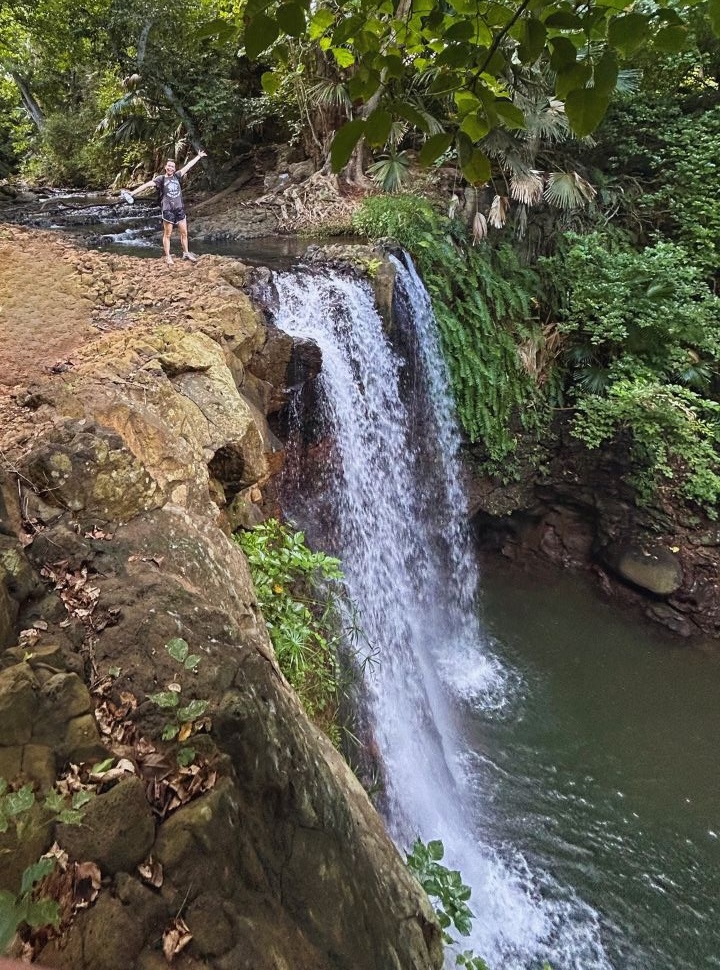
Lots of free activities
When it comes to sightseeing, many of Mauritius’ highlights are completely free—waterfalls, coastal trails, and hikes through Black River Gorges National Park, just to name a few. Mix in a few paid tours, and you’ve got an exciting itinerary that won’t blow your budget.
Stay at a strategic location
Since we road-tripped around the whole island, we rented a car for the entire stay. But if you’re looking to save, consider staying in one central location and renting a car only when needed. Many guided tours offer full day tours showing you the best of Mauritius. Plus they also offer hotel pickup , which is a big plus.

If you want a beach holiday with easy access to day trips and activities, we highly recommend staying somewhere like Flic en Flac. It’s central, has a gorgeous beach, and makes it easy to hop on a bus, join a tour, or head out for the day without covering the whole island.
Go during the shoulder months
An finally, like any holiday destination, visit at the most budget-friendly time. For Mauritius to would be around April to June or September to November. You’ll enjoy pleasant weather, fewer crowds, and better deals on accommodations and activities. It’s the perfect window to experience the island’s charm without the peak-season price tag!
So, Is A holiday In Mauritius Expensive?

Honestly? It’s not exactly a backpacker’s haven—and yes, compared to traveling in, say, Southeast Asia, some things here can feel a bit pricier.
We spent about USD 108 per person per day, including flights. That might sound like a lot—especially since we tried to stick to a budget, chose more modest accommodations, and focused our spending on actually experiencing the island rather than living like royalty. But here’s the thing: it was totally worth the money.
Mauritius is one of those places you don’t want to miss. The lush nature, postcard-perfect beaches, and the unbelievably friendly locals made the entire trip feel like a warm hug wrapped in sunshine. Sure, we probably could’ve shaved off a few expenses here and there (maybe skipped that desert), but honestly—every moment felt golden.
So, is a holiday in Mauritius expensive? Only if you make it that way. With a bit of planning, some flexibility, and a tighter grip on your budget than we managed (oops), it can absolutely be a great time without blowing your savings.
Would we go back? In a heartbeat. And next time… we just might intentionally splurge on one of those dreamy resorts with infinity pools and breakfast delivered to a floating tray. Hey, a little luxury never hurt anyone, right?
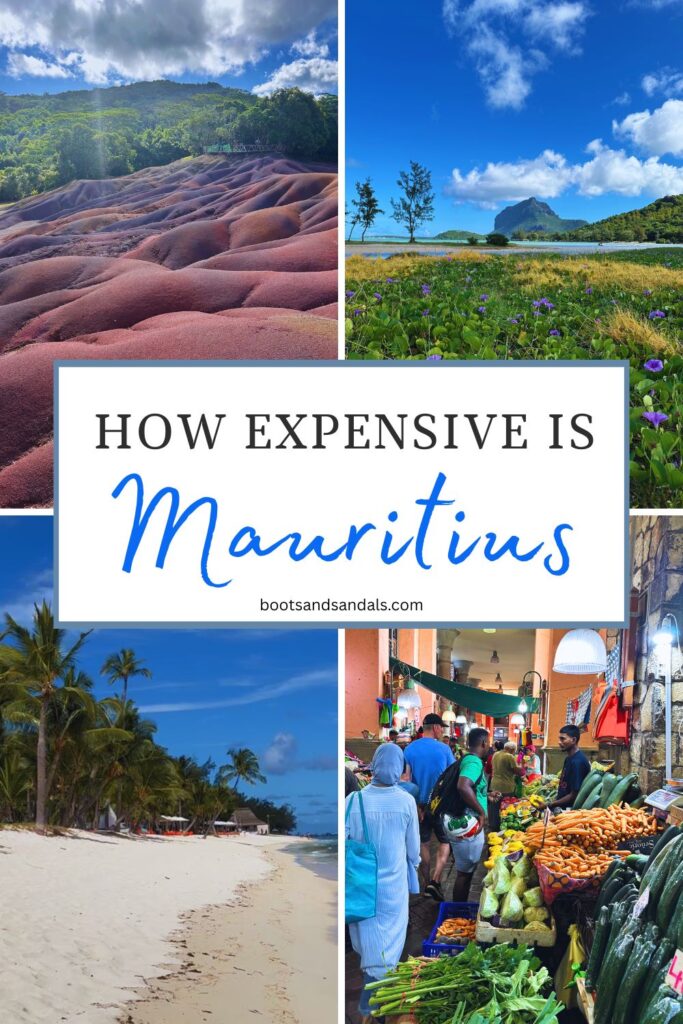
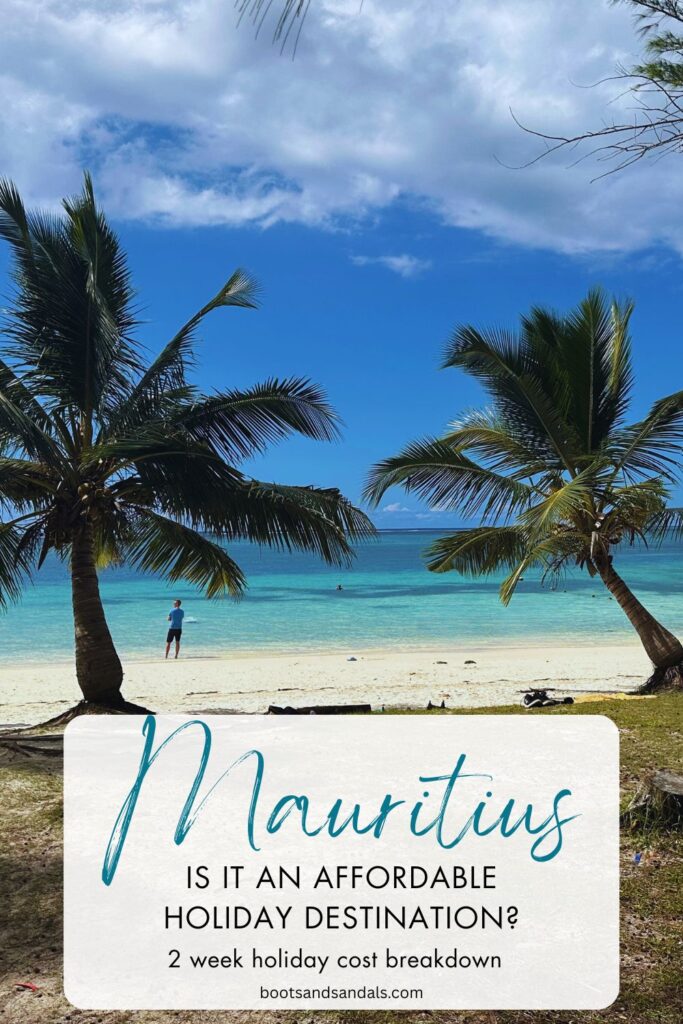

Monico was born in Kuwait and grew up in Indonesia, Malaysia, and Australia, which gave her a unique perspective on the world from a young age. Her first solo travel experience took her to Indonesia, where she volunteered at an orangutan rehabilitation center, and since then, she has focused her travels on environmental and conservation projects in places like Panama and Australia. Along with her love for wildlife, Monico enjoys exploring historic European cities, swimming in the sea, and tasting street food in Asia.
